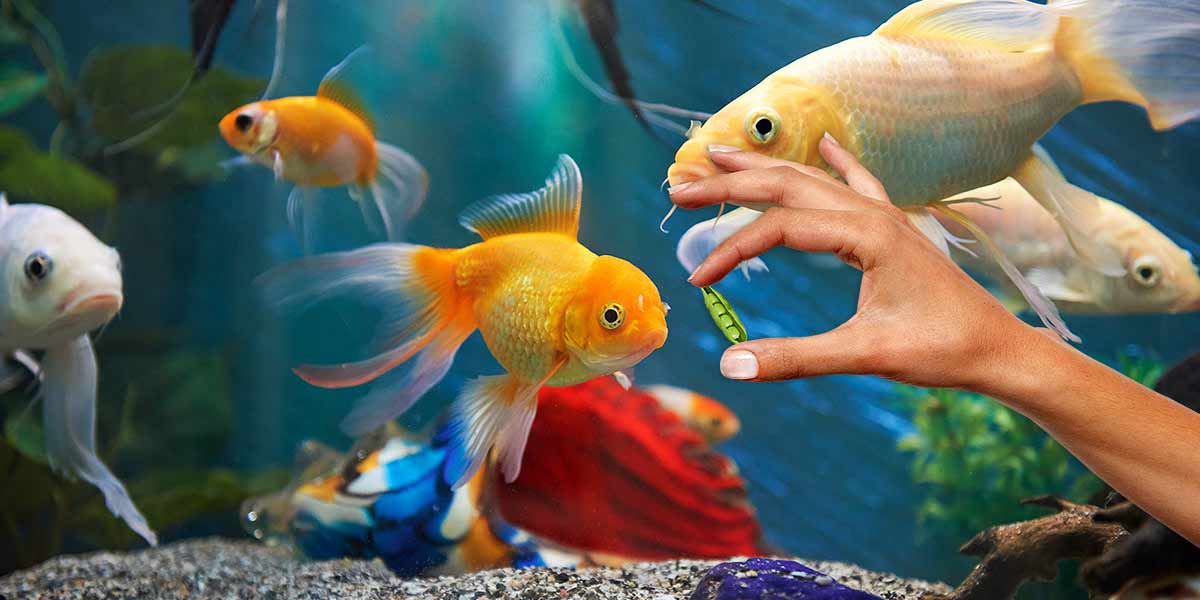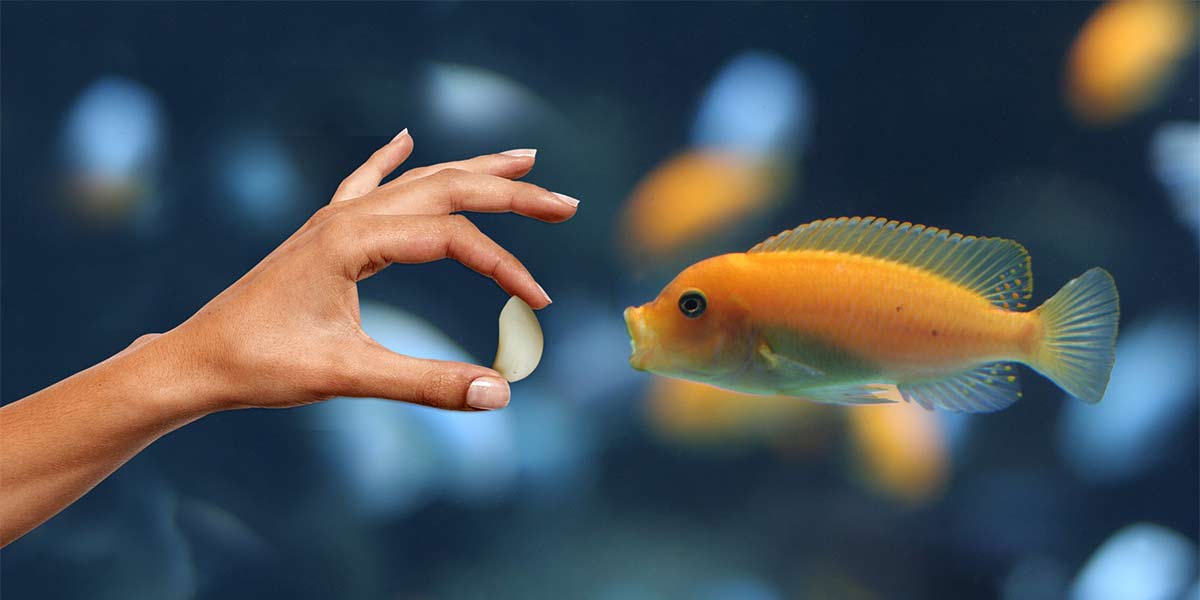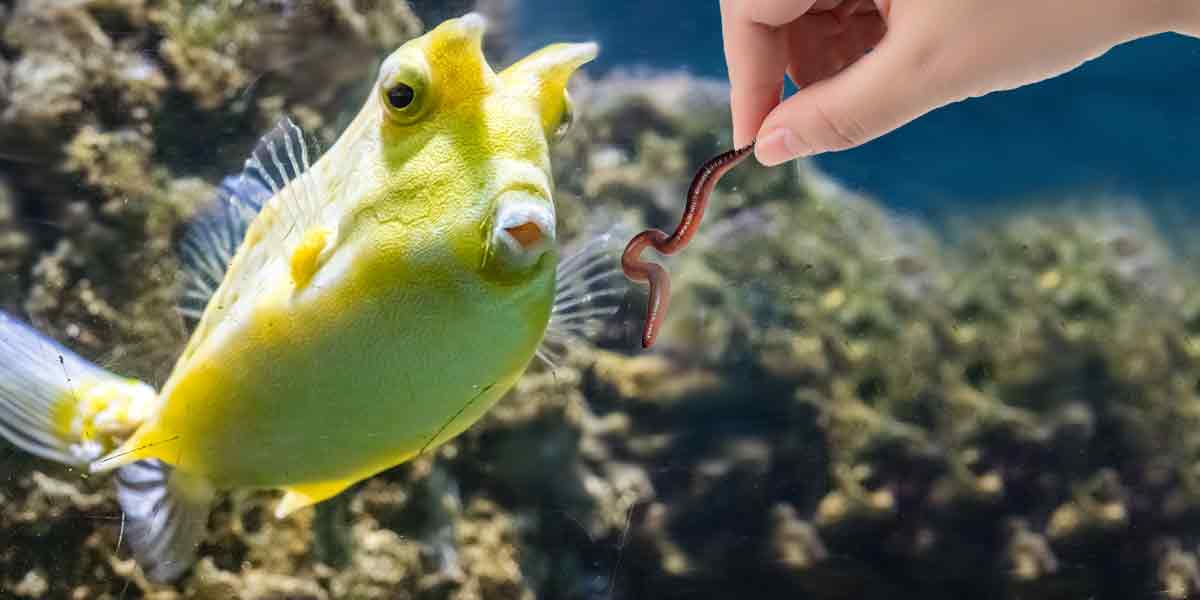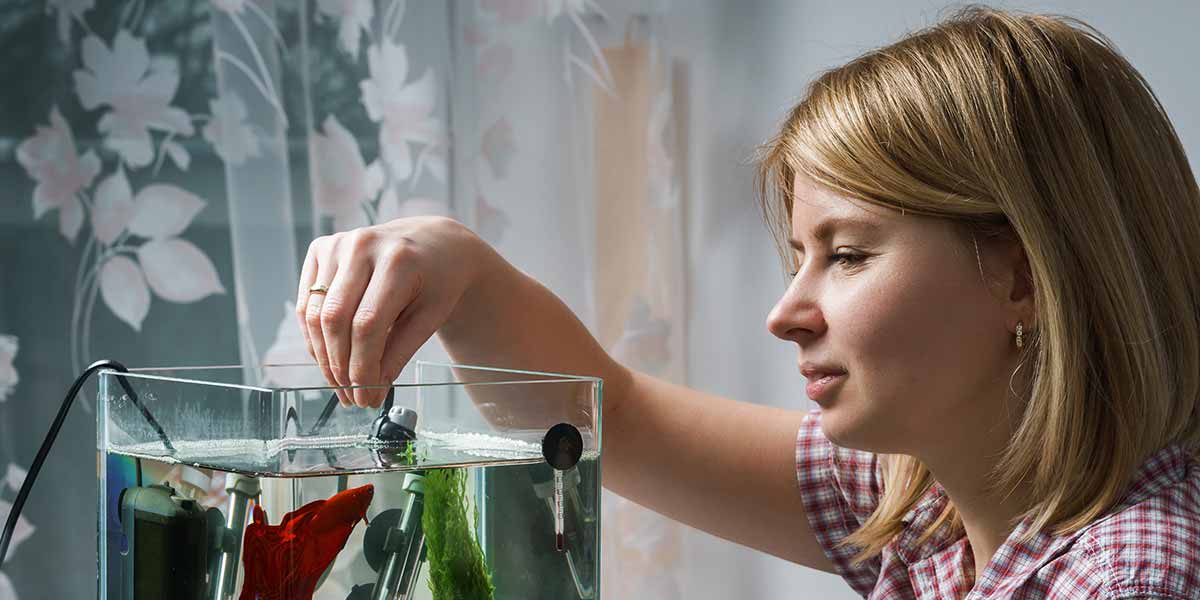I had recently bought a new fish for my new aquarium tank and was so excited to have a companion to talk to and take care of. But after a few days, I began to worry about the fish’s health and diet. After doing some research, I learned that one of the best foods to feed a fish is peas. So I asked myself, “Can I feed my fish peas?”
As an affiliate, we earn from qualifying purchases. We get commissions for purchases made through links in this website’s posts from Amazon and other third parties.
I began to search for more information on feeding fish peas and was surprised to find out that there are a few key things to consider. For one, some fish may not like eating peas, and could even become sick from eating too many. I also learned that there can be risks involved when feeding a fish peas, so it is important to know the best way to do it.
As I learned more and more about feeding my fish peas, I felt like I was gaining a better understanding of how to take care of my new pet. I found that many tips and tricks could help keep my fish happy and healthy, while also making sure they got the best nutrition.
If you’re wondering whether you can feed your fish peas, then keep reading to learn more. From how to tell if your fish likes peas, to how to prepare them most safely, I’m here to help you figure out the best way to feed your fish peas. So don’t wait any longer, read on and find out how to feed your fish peas safely and effectively.
Exploring the pros and cons of feeding your fish peas
The truth is that peas can be an effective food source for your fish, with both pros and cons. On one hand, fish love the taste of peas, so they can easily become a regular part of your fish’s diet. On the other hand, peas can be difficult to digest for some fish, so you’ll have to watch for signs of distress.
Pros
The first pro of feeding your fish peas is that they provide a great source of vitamins and minerals. Peas contain B vitamins, Vitamin C, calcium, carbohydrates, and magnesium, which can help keep your fish healthy. They also offer a great source of dietary fiber, helping your fish stay full and active. The second pro is that peas are highly palatable, making them an excellent snack for your fish.
Peas are also a good source of protein, so they can provide many of the same benefits as more traditional fish food. All of these nutrients can help keep your fish healthy and keep its immune system strong.
Another benefit of feeding your fish peas is the added variety. Just like humans, fish can get bored with eating the same food all the time. Adding peas can give them something new and exciting to try. It also helps to keep them interested in their food, which can help make sure they get all the nutrition they need.
Cons
The first con of feeding your fish peas is that they can be difficult to digest. Peas contain a lot of fiber, which can be hard for some fish to process. This can lead to indigestion, bloating, and constipation in some fish. Another con is that peas can give your fish gas. This can be uncomfortable for your fish and cause behavioral changes in some cases.
Before you feed your fish peas, it’s important to research the type of fish you have and consult with a veterinarian if necessary. Some fish may be more sensitive to peas than others, so it’s best to be prepared and aware of the potential risks. Once you’ve done your research, you can decide if feeding your fish peas is a good diet for your aquarium friend.
What kind of peas can you feed your fish?
As a fish owner, I’m always looking for healthy and nutritious ways to feed my fish. One of the most common questions I get is, “What kind of peas can I feed my fish?” The answer is that there are a variety of types of peas that can be safely fed to your fish:
Green peas
The most common type of pea used to feed fish is the green pea. Green peas are a great source of protein, carbohydrates, and fiber, which are all important for healthy fish. However, it’s important to note that green peas should only be given in moderation since they can cause bloating.
By feeding fish green peas, which sink, they consume less air while eating.
Yellow peas
Another type of pea that can be safely fed to your fish is the yellow pea. Yellow peas are rich in vitamins, minerals, and amino acids, making them an excellent source of nutrition for your fish. In addition, yellow peas are high in fiber, so they can help keep your fish’s digestive system healthy.
Snow peas
Finally, there is the snow pea. Snow peas are a great source of essential fatty acids and are also high in vitamins and minerals. As with the other types of peas, snow peas should be fed in moderation.
Preparing and adding peas to your fish’s diet
As a fish owner, it’s important to me to make sure my fish are getting the right nutrition. That’s why I take the time to feed them a variety of items, including peas. While it might seem odd to some people, I’ve found that adding peas to my fish’s diet has been a great way to make sure they are healthy and happy.
How to prepare peas to feed your fish
No matter which type of pea you choose to feed your fish, it’s important to make sure that you cook the peas before serving them. This helps to make sure that the peas are safe for your fish to consume. You should also be sure to feed your fish a variety of other foods, such as flakes, pellets, and frozen foods to give them a balanced diet.
Preparing the peas is essential. First, you should thaw out the frozen peas in a bowl of cold water. Then, you need to rinse the peas off with warm water to remove any dirt or debris. Finally, you can lightly mash the peas with a fork or potato masher. This will help break down the peas and make them easier for your fish to digest.
How to cook peas for your fish
Feeding fish peas is quite easy. All you need to do is boil them until they become soft. Once they are done, you can mash them up and mix them into your fish’s regular food. You can also give them whole peas, but be sure to check that the size is appropriate for your fish.
Overall, I’ve found that adding peas to my fish’s diet has been a great way to make sure they are getting the nutrition they need. They provide essential vitamins and minerals. And they also give my fish something new and exciting to try. Plus, they’re easy to prepare and serve, so I don’t have to worry about taking up too much of my time.
Overall, peas are a great addition to any fish’s diet. Not only are they a great source of nutrition, but they can also help keep your fish’s digestive system healthy. So, if you’re looking for a nutritious and tasty snack to feed your fish, give peas a try!
How to serve peas to your fish
You can steam or boil them, or even puree them into a paste. You can even mix them with other ingredients like carrots, celery, or onions. The possibilities are truly endless!
What I discovered was that the best way to serve peas to fish was to mash them up and mix them with some fish food flakes. This way, your fish will get a good mix of nutrients and flavors. The peas will also provide a great source of fiber and minerals. Plus, it’s a great way to make sure your fish get the nutrients they need to stay healthy and happy.
It’s important to make sure the peas are properly thawed before serving them to your fish. Peas that are still partially frozen can be difficult for fish to chew. So it’s important to either thaw them in a bowl of warm water or microwave them before serving. This will ensure that the peas are soft enough for your fish to eat. And it will make them much more attractive.
An issue I’ve encountered is not properly cooked peas. To make sure that your peas are cooked properly, I recommend boiling them for 15 minutes or until they have reached a soft consistency. This will help to ensure that the peas are cooked properly and that your fish can digest them correctly.
If you’re wondering how to serve peas to your fish, then look no further. I’ve gathered all the tips and tricks you need to know. In that way, you get your fish the best nutrition from their food.
Choosing the right type of peas, storing them, and safety considerations
To make sure the experience is as successful as possible, it is important to choose the right type of peas. Prepare and store them correctly, and take safety considerations into account.
What types of peas are right for my fish?
When choosing the right type of peas, you need to consider the size of your fish. If you have small fish, you should look for small-sized, frozen peas. If your fish are larger, you can select larger peas, such as canned peas. For the best results, you should also check the ingredients list. Make sure the peas you are purchasing are preservative-free, organic, and free of any additives.
Storing the peas
Once you have prepared the peas, it is important to store them in the refrigerator. Use them within two days.
Safety considerations when feeding peas to your fish
Lastly, safety considerations must be taken into account. Peas can be a great source of nutrition for your fish, but they should not be the only food your fish eats. Be sure to feed your fish a varied, balanced diet with other sources of protein, vitamins, and minerals.
How many peas should I feed my fish?
Be sure to only feed your fish the number of peas they can eat in two minutes. Overfeeding can cause digestive issues.
Choose the right type of peas, prepare them, and store them correctly. And by taking safety considerations into account, you can set up to serve peas to your fish with ease.
We recommend giving your young fish 1-2 peas or 3-4 peas to older fish. With the right approach, you and your fish can enjoy a nutritious and delicious meal.
How often to feed peas to your fish?
Giving your fish peas once a week for laxative purposes and better water quality in your tank is OK.
Risks feeding your fish peas
Dried green peas have more fiber than fresh peas because of the reduced water content, so don’t give these to your fish. If added to water, the peas will regain the lost water and can cause damage to a fish’s delicate GI tract.
Watch the next video to find out what the Aquatic Veterinarian says about feeding your fish green peas:
Can fish eat pea skin?
Fish cannot consume pea skin so it is a good idea to peel off the skin before feeding it.
Peas is a healthy diet for your fish but feeding it daily is not recommended. Fish needs a balanced diet with various dry or even live food.
Conclusion
I went to my kitchen, grabbed a handful of ready-made peas, and put them on the edge of the fish tank. I watched as the fish swam around the tank until it finally noticed the peas. The fish approached the peas and started to nibble on them. Joy swelled in my heart as I watched my pet eat something I had served it.
I stood there, admiring my pet’s appetite and the fact that I had been able to make it happy, even if it was only a handful of peas. I smiled, happy that I had been able to surprise my fish and make it happy.
From then on, every day I served my fish a handful of peas. It was a special bond between us, and I was sure that my pet was grateful for every single pea I fed it. I was happy to provide my pet with a nutritious meal and it was one of the best moments of my day.







this is confusing – can I feed my fish green peas every day, or only once or twice a week? How much – a handful, or just 2 or 3? do they need to be peeled or not? I’m grateful for your website, but please clarify for me!
hi, I am Pan the web editor of canifeedit.com,
let me please clarify this,
Q: Can I feed my fish green peas every day, or only once or twice a week?
A: As said in the article, giving your fish peas ONLY once a week for laxative purposes and better water quality in your tank is OK.
Q: How much – a handful, or just 2 or 3?
A: Well, that depends on the size and age of your fish. For younger fish, only 1 to 2 peas should be used, while for adults, 2 to 3 peas should be fine. Any leftover peas that you haven’t used should be frozen for future use. In the article it says a “handful of peas” cause I grab a lot but choose a few – only some good ones – for feeding the fish. I have an XXL fish in my tank:) Also, I freeze a lot of them for future use.
Q: do they need to be peeled or not?
A: Yes please peel off the skin, fish cannot consume the skin!
I hope this helps,
Remember to contact always your veterinarian for a nutritious diet for your fish!
Be well!